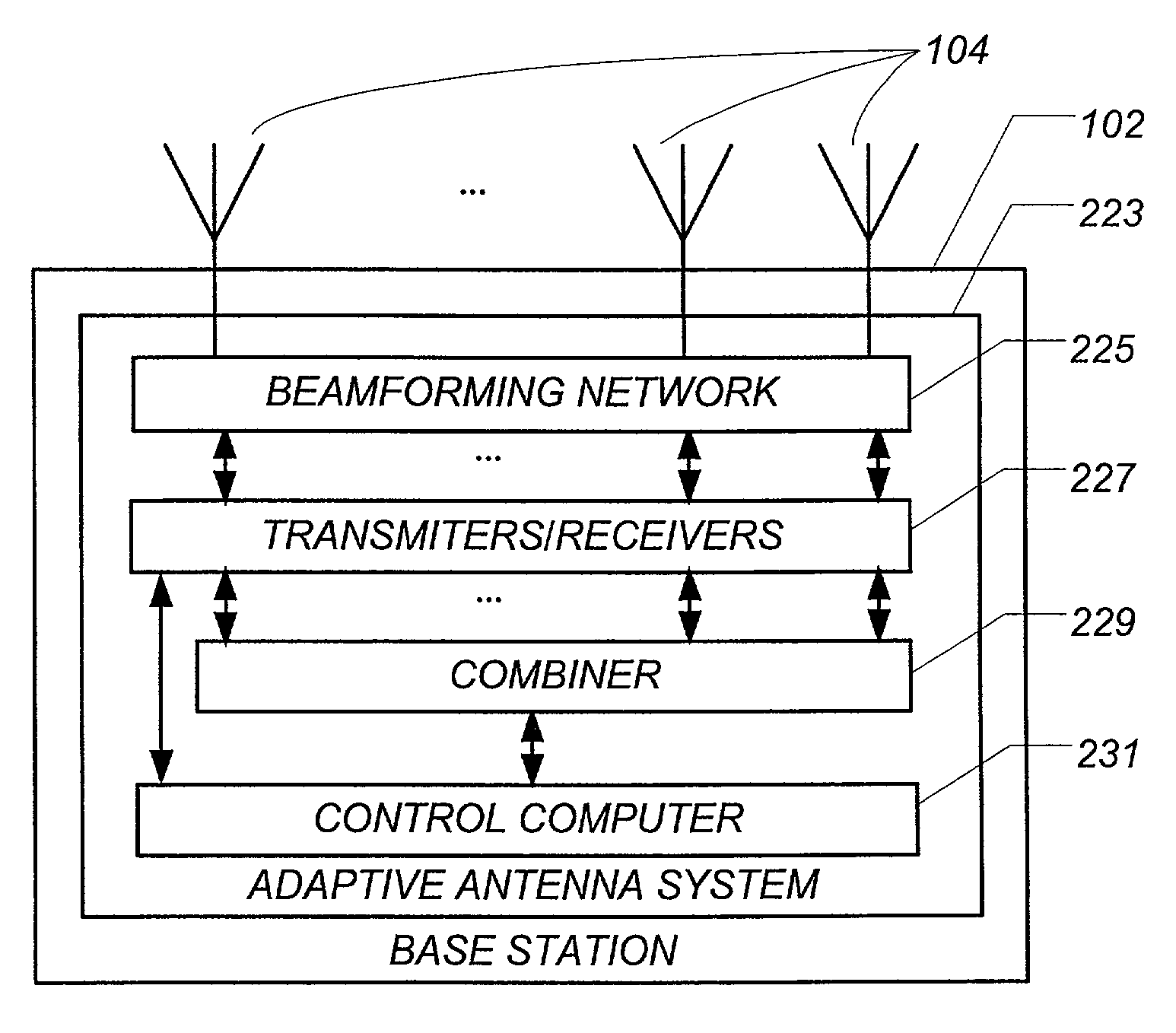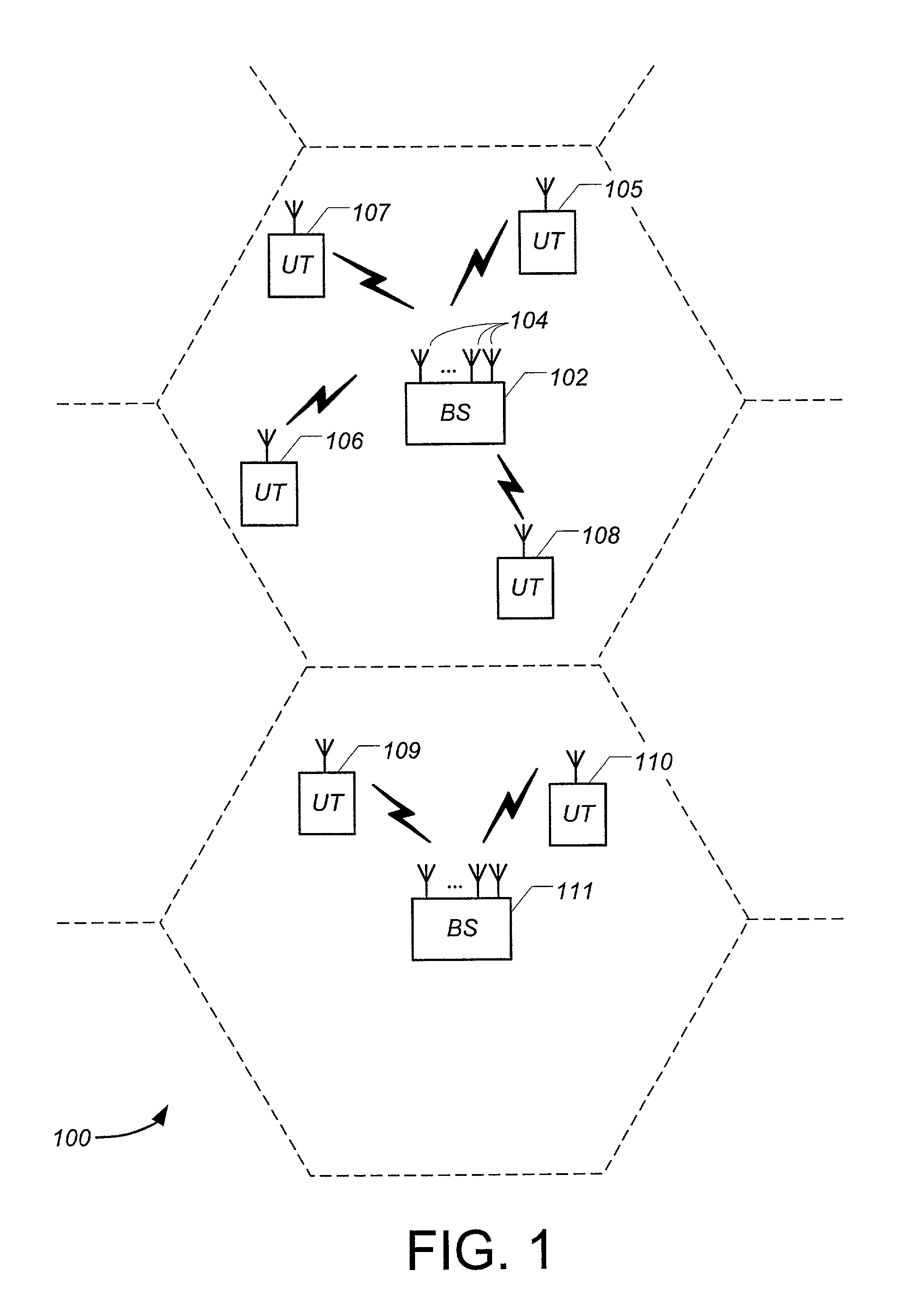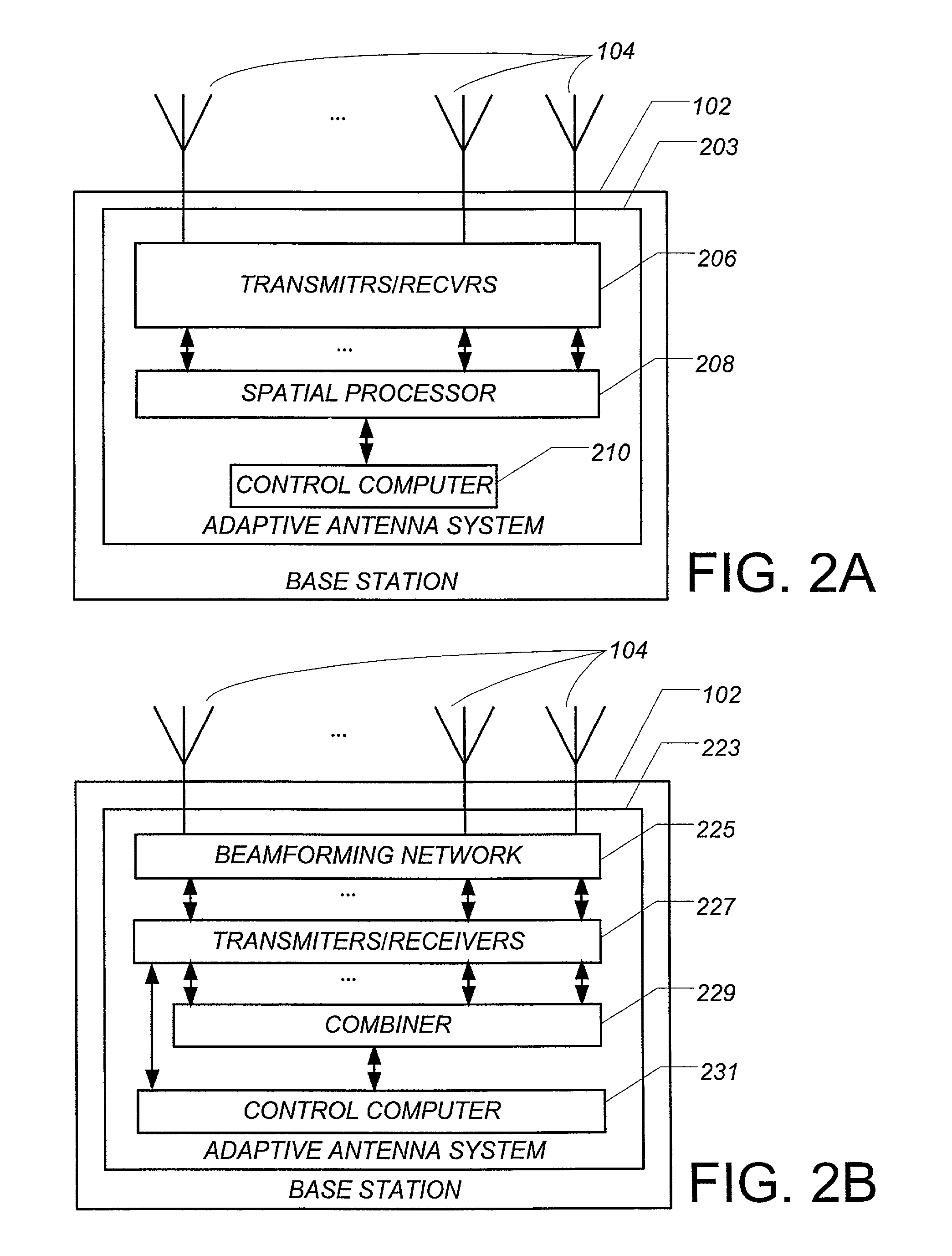Non-directional transmitting from a wireless data base station having a smart antenna system
a wireless data base station and smart antenna technology, applied in the field of radio communication, can solve the problems of inability to mitigate, base station may not have an adequate radio-frequency link to the other user terminal, and may not be able to initiate communication between a base station and a user terminal that may be in idle state, etc., and achieve the effect of reducing interferen
- Summary
- Abstract
- Description
- Claims
- Application Information
AI Technical Summary
Benefits of technology
Problems solved by technology
Method used
Image
Examples
first embodiment
[0102]In a first embodiment, the different non-directional strategy transmits towards another one of the eigenvectors that is substantially in the interference covariance matrix null space to determine a smart antenna processing strategy for downlink paging. Repeating in a future frame of the sequence of frames may provide for paging in the presence of a different set of interferers since the interference environment may be rapidly changing, for example because a different set of user terminals may be being paged in the next frame. Using a different eigenvector in the null space directs the page over a different radiation pattern, providing downlink strategy diversity.
second embodiment
[0103]The interference environment may not change sufficiently rapidly. Thus, in a second embodiment, the repetition is carried out in a different downlink data transfer period of the set of sequential time periods. In the case of TDMA, for example, this may coincide with a different timeslot. To generalize, the repeated transmission occurs on a different downlink conventional channel than the particular downlink traffic data transfer conventional channel of first transmission. For a FDMA system, this may be a different frequency.
[0104]Thus, in accordance to the second embodiment, the receive interference covariance matrix is determined from signals received at an acknowledgement transfer period that is associated with a different downlink data transfer period, and the eigenvector of the received interference covariance matrix with the smallest eigenvalue is used to determine the downlink spatial processing for the smart antenna system during transmission of the page during this dif...
PUM
 Login to View More
Login to View More Abstract
Description
Claims
Application Information
 Login to View More
Login to View More - R&D
- Intellectual Property
- Life Sciences
- Materials
- Tech Scout
- Unparalleled Data Quality
- Higher Quality Content
- 60% Fewer Hallucinations
Browse by: Latest US Patents, China's latest patents, Technical Efficacy Thesaurus, Application Domain, Technology Topic, Popular Technical Reports.
© 2025 PatSnap. All rights reserved.Legal|Privacy policy|Modern Slavery Act Transparency Statement|Sitemap|About US| Contact US: help@patsnap.com



